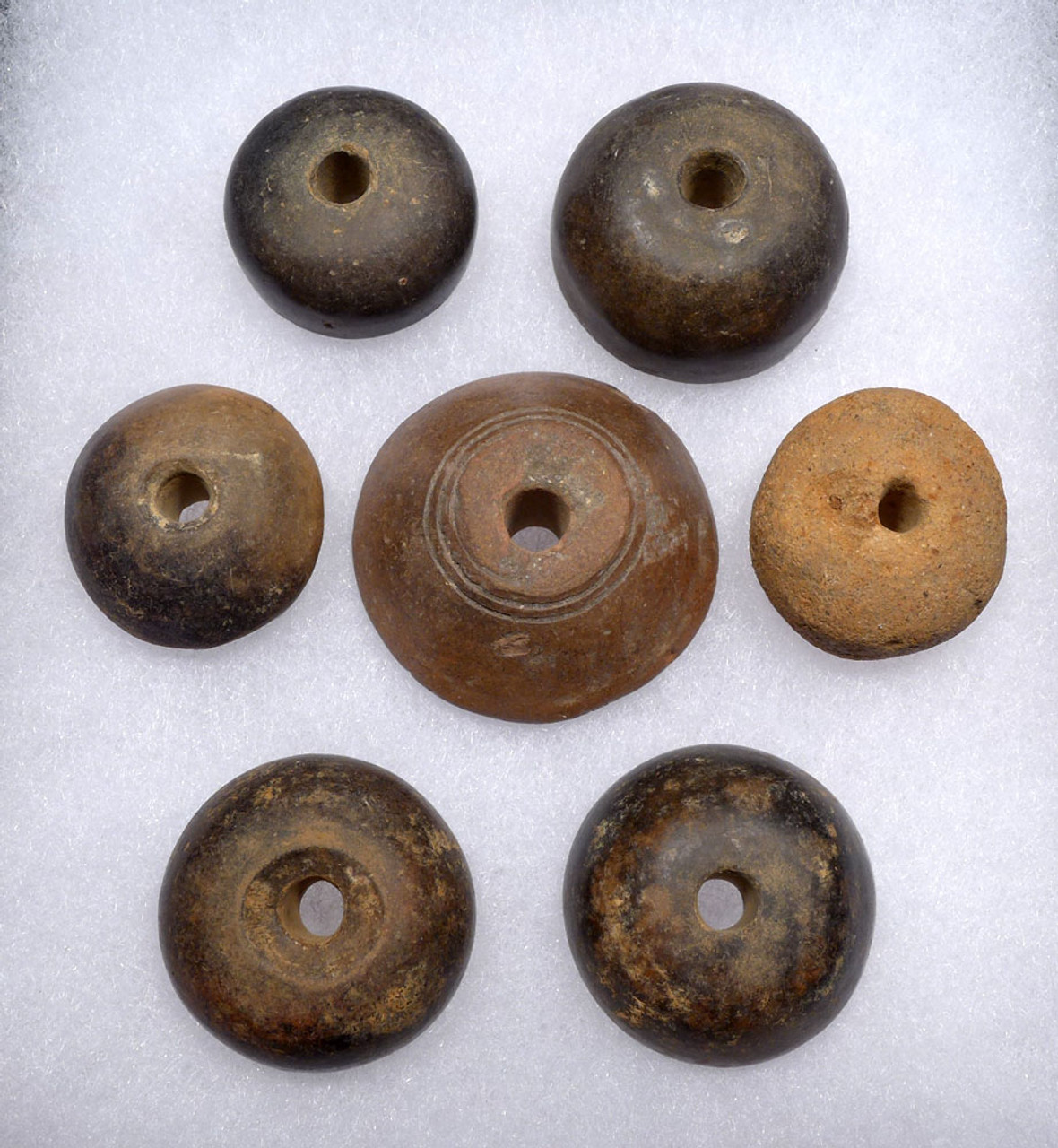Product Description
SEE MORE PRE-COLUMBIAN ANCIENT TEXTILES AND RELATED ARTIFACTS
Used as a vital component for spinning fibers to make yarn for textiles, this is a fantastic set of 7 different ancient ceramic spindle whorls that date back from the 1st century BC through the 10th century AD. They are attributed to the ancient Pre-Columbian Quimbaya civilization of South America. A spindle was inserted through the center hole and the bead served as a weight to make the spindle turn easier as fibers were twisted and wrapped around into a coil to be later used in weaving. Each of these exceptional examples shows decoration and fine preservation with an excellent array of different styles and decorations. Textile manufacture was an important part of life for these Pre-Columbian cultures and weavers could make some beautiful textiles rivalling what can be created by hand today.
HISTORY
The Quimbaya civilization was a Pre-Colombian culture of Colombia, noted for their gold work characterized by technical accuracy and detailed designs. The Quimbaya inhabited the areas corresponding to the modern departments of Quindío, Caldas and Risaralda in Colombia, around the valley of the Cauca River. There is no clear data about when they were initially established; the current best guess is around the 1st century BCE. The name "quimbaya" has become a traditional generic term to refer to many of the productions and objects found in this geographical area, even if they do not come rigorously from the same ethnic group and come from different epochs in time. The Quimbaya people reached their zenith during the 4th to 7th century CE period known as The Quimbaya Classic. Around the 10th century the Quimbaya culture disappeared entirely due to unknown circumstances.
The Quimbaya people mined and worked gold, and developed advanced metallurgy techniques. Quimbaya technical skill also extended to the manufacture of oil for lighting, and in creating textiles, although given the poor geological conditions necessary for their preservation, few examples of textiles have survived. The manufacture of cotton blankets was, in fact, their main industry.
 US DOLLAR
US DOLLAR
 EURO
EURO
 AUSTRALIAN DOLLAR
AUSTRALIAN DOLLAR
 CANADIAN DOLLAR
CANADIAN DOLLAR
 POUND STERLING
POUND STERLING
















